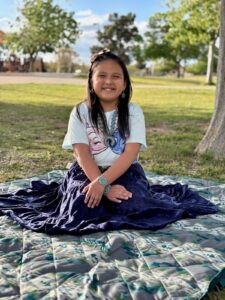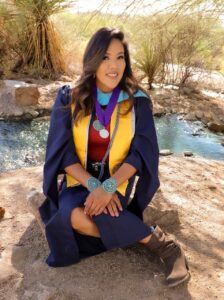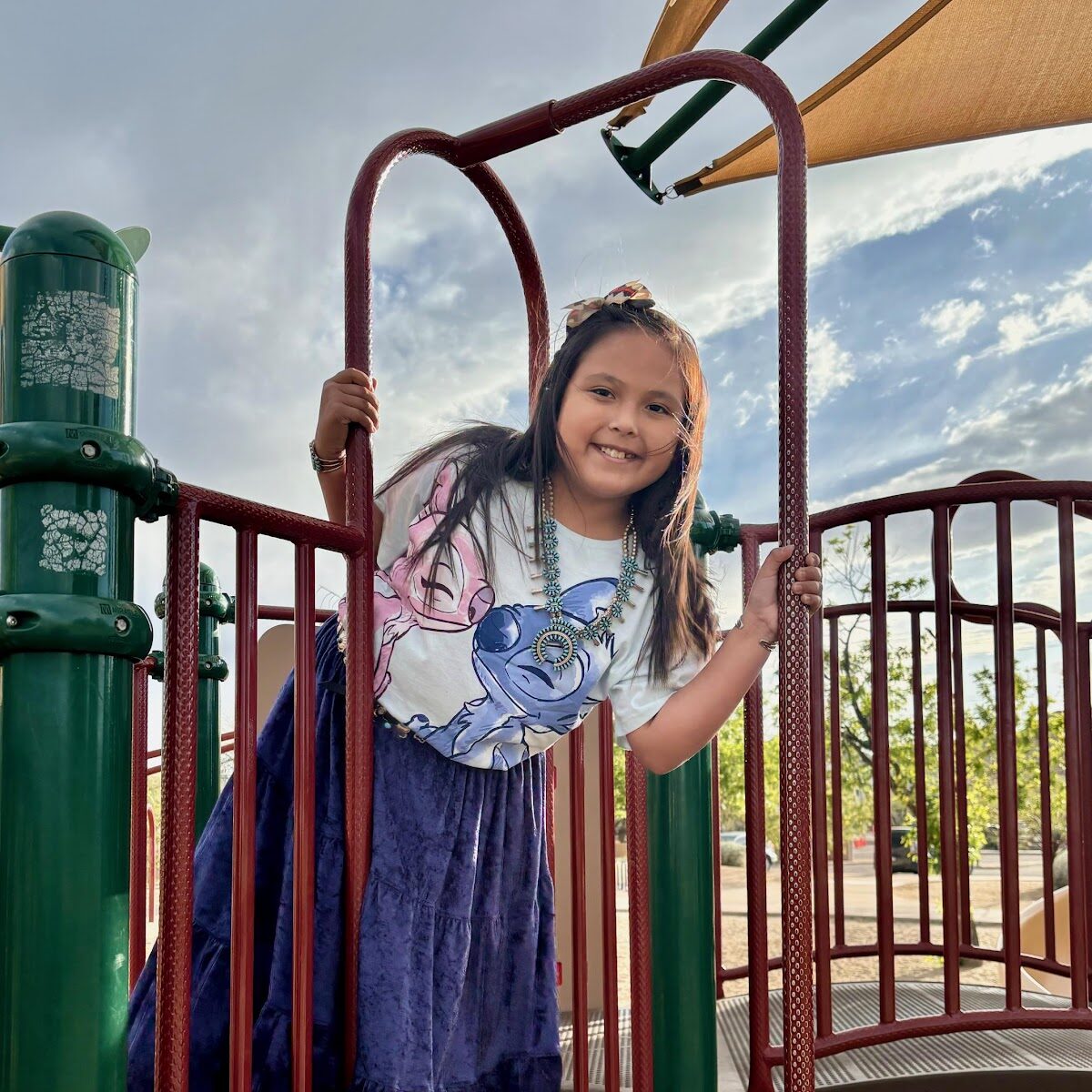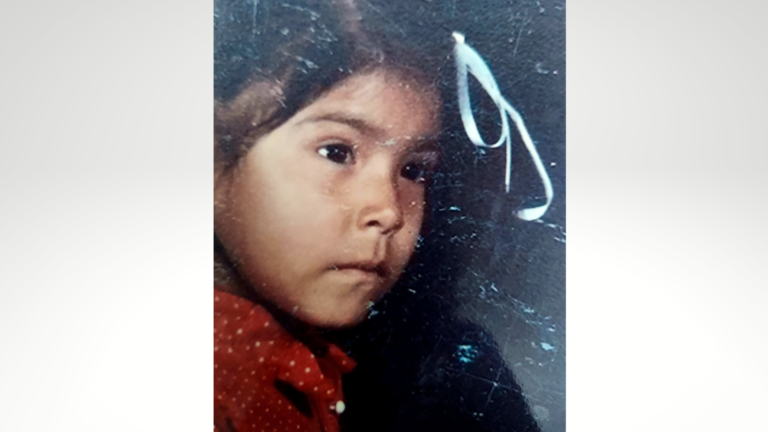By Danielle June, M.Ed, M.OL/PMP
To be an indigenous parent today means to apply best and promising practices from two worlds and blend them together, in order for us to heal future generations.  Our indigenous children today suffer from the transfer of intergenerational trauma that has stemmed from historical trauma. As an indigenous parent, I am constantly faced with trying to understand empathy and how it works, due to the long-lasting effects of boarding school style discipline that was prevalent during the times of my grandparents’ upbringing. It has done years of damage. For someone that was born in the early 1980’s, empathy was not at the forefront, because you were taught that you need to be strong and to feel was a weakness. Feelings were not spoken of and they were definitely not expressed. Indigenous communities root their children with weapons of survival, because the best protection is to fight, flight, or freeze. Yet, it leads to negative coping mechanisms and repeats the same cycle of trauma, in which empathy is still the last in line.
Our indigenous children today suffer from the transfer of intergenerational trauma that has stemmed from historical trauma. As an indigenous parent, I am constantly faced with trying to understand empathy and how it works, due to the long-lasting effects of boarding school style discipline that was prevalent during the times of my grandparents’ upbringing. It has done years of damage. For someone that was born in the early 1980’s, empathy was not at the forefront, because you were taught that you need to be strong and to feel was a weakness. Feelings were not spoken of and they were definitely not expressed. Indigenous communities root their children with weapons of survival, because the best protection is to fight, flight, or freeze. Yet, it leads to negative coping mechanisms and repeats the same cycle of trauma, in which empathy is still the last in line.
As I grew older, I became an educator and studied Early Childhood Education, in which I mainly taught in predominantly indigenous communities. Throughout my educational career, I gravitated to the concept of social emotional learning. I developed an understanding of how children respond and how they integrate both cognitive thinking and emotions together. Quickly, I learned that not only did I need to understand social emotional learning, but also I needed to meet our children where they were in their social emotional journey. It is imperative that we look at the whole child and break down all components that make them unique. Not only is it their academic abilities and their readiness to learn, but also it is their identity–cultural identity. Our indigenous children come from a background rooted in traditional knowledge and intergenerational kinship practices. This rich background consists of land-based teachings, which is told to us through the art of storytelling. It begins with our creation stories and how each living member on earth is our relative. Therefore, we are taught to be respectful and relevant as well as how to take responsibility and reciprocate the significance traits played by each member in the story.
 By blending both concepts together, we get culturally responsive teaching, but if we apply empathy to the art of storytelling–we get culturally responsive care. Now, we can weave together a social emotional Pendleton blanket to wrap up our children. This ensures that they have the skillset to build their confidence and express their voice. In order for us to heal, we must discuss the feelings of each member in the creation story, and how their abilities were helpful or hurtful. This allows our children to understand empathy and develop compassion, which leads to resilience. We begin to see them develop a positive and realistic perception in decision making, which also means positive coping mechanisms. Empathy is the key factor for our indigenous communities to become successful. As an indigenous parent, I apply both indigenous and industrial learning concepts in my everyday interactions with my daughter–we belong to the land, we do not own it. Therefore, parenting in two worlds can be very challenging, yet grounding at the same time, because we always refer back to our roots.
By blending both concepts together, we get culturally responsive teaching, but if we apply empathy to the art of storytelling–we get culturally responsive care. Now, we can weave together a social emotional Pendleton blanket to wrap up our children. This ensures that they have the skillset to build their confidence and express their voice. In order for us to heal, we must discuss the feelings of each member in the creation story, and how their abilities were helpful or hurtful. This allows our children to understand empathy and develop compassion, which leads to resilience. We begin to see them develop a positive and realistic perception in decision making, which also means positive coping mechanisms. Empathy is the key factor for our indigenous communities to become successful. As an indigenous parent, I apply both indigenous and industrial learning concepts in my everyday interactions with my daughter–we belong to the land, we do not own it. Therefore, parenting in two worlds can be very challenging, yet grounding at the same time, because we always refer back to our roots.
Overall, the resiliency factor that I have been able to overcome by blending two worlds together in a way that promises a better outlook for our indigenous children has ensured a pathway to building stronger connections to heal future generations. When I began weaving the social emotional Pendleton blanket for my daughter, I considered all aspects of promoting social emotional competencies, such as self-management, self-awareness, social awareness, relationship skills, and responsible decision making. In addition, I wove in the special traits from the creation story, such as the strength from the eagle, feathers representing protection, and the turquoise stone that created the sun. Altogether, customizing the bold and southwest designed blankets to best fit our indigenous children with their unique design of their cultural identity and remarkable heritage. This way they can mark their special occasions and celebrate their learning milestones of accomplishing the important life skills needed to be resilient. In all, the social emotional Pendleton blanket is the new weapon of survival, because it eliminates self-destructive behavior and warms the spirit with new knowledge of how to identify emotions and stress, so indigenous communities can thrive.
 Yá’át’ééh, Shi ei Danielle June yinishye’.
Yá’át’ééh, Shi ei Danielle June yinishye’.
Ma’ii Deeshgiizhinii nishłį́,
Tódích’íí’nii bashishchiin,
Hooghanłání dashicheii,
Tł’ízí Łání dashinalí,
Ahéhee’.
Greetings! My name is Danielle June. I am of the Coyote Pass clan born for the Bitter Water clan. My maternal grandfathers’ clan is One Walks Around and my paternal grandfathers’ clan is Many Goats. This is how I identify myself as a Navajo woman, in which I am a member of the Navajo Nation. Thank You! As I have embarked on my leadership journey with experience from the American Indian Policy Institute at Arizona State University, and higher education from Northern Arizona University, I have been able to develop a well-rounded background in early childhood, educational leadership, organizational leadership, and project management.
My career began in the classroom then transitioned to administration and eventually in senior management. Together, I have blended my knowledge and skillset to serve the community in a more culturally responsive way that promotes diversity, equity, and inclusion. Therefore, creating workplaces to understand bias, develop equitable solutions, strategize plans that activate voice as well as creates belonging, and empowers individuals to seek their highest executive functions to cultivate overall growth. Ultimately, seeking positions that allow me to advocate on the behalf of our indigenous communities and for our children, because it is them that deserves healing and restorative environments.


